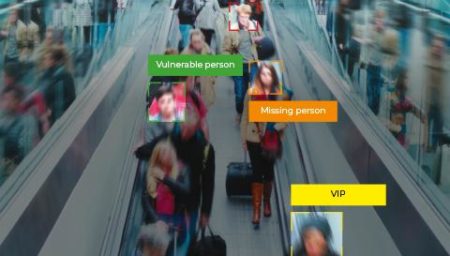Protecting areas of interest and streamlining access with Augmented Vision

Over the last decade or so, there has been a significant shift in the way law enforcement agencies conduct investigations. This is primarily due to the increased use of smartphones, security and traffic enforcement cameras, social media platforms, etc. This ever more complex landscape is proving challenging. The aim is to solve cases quickly, but the reality is that there is an endless amount of data that needs to be sifted through.
After a case is opened, investigators are often overwhelmed by huge volumes of social media and smartphone data and find it very difficult to find a viable lead. Spending several days watching, reading, listening to and reviewing data, they will scrutinize every angle. The goal is to find even the smallest piece of relevant information that could help the investigation.
The good news is that digital innovations and technologies have also shaped a new era for law enforcement, enabling the automation of such time-consuming tasks. Today, video analytics can analyze days of footage and thousands of photos to find subjects and objects of interest in post-event investigations.
For example, it would typically take multiple people and weeks of work to view 500 hours of video footage, potentially studying half a million faces. Video analytics can complete this in almost a day on a small workstation with a single officer.
Video analytics solutions are designed to make sense of all available video and image data, enabling investigators to quickly find leads.
But that is not all. Intelligence Analysis Management (IAM) takes all raw data and transforms it into understandable, organized information. IAM helps investigators to connect the dots by providing a clear, global vision of contextual information in four dimensions: what/who, when, where and with whom.
Investigators can discover and navigate the connections and networks between events, objects, contracts, documents, individuals, groups, vehicles, equipment, cases, files, and much more.
Innovative Natural Language Processing technologies analyze, organize, and enhance information in text format. For instance, semantic analysis identifies important information scattered in a mass of documents and more importantly considers the different terminologies. Thanks to semantic analysis, different names will be presented to the investigating officer regardless of the formulation of the request.
All these digital innovations and technologies support law enforcement agencies by automating time-consuming tasks and the decision on whether or not to follow a lead remains with the officers. The objective of this technologies is to enable officers to focus their time on solving cases quickly and efficiently.